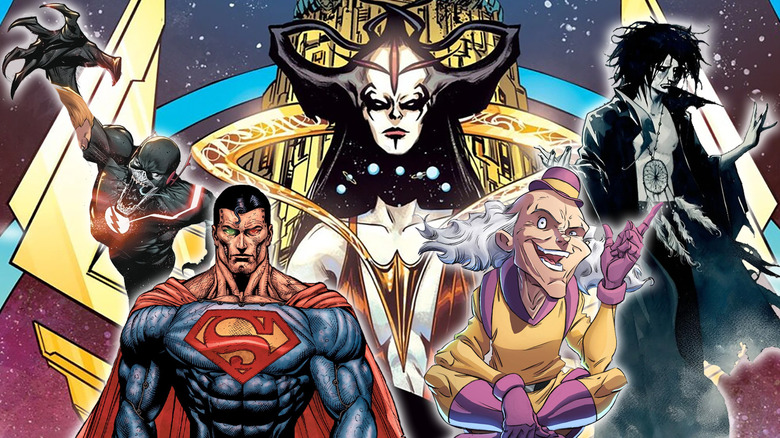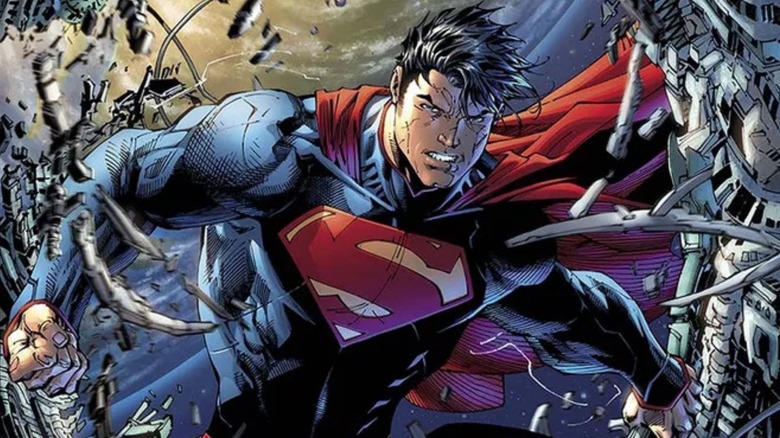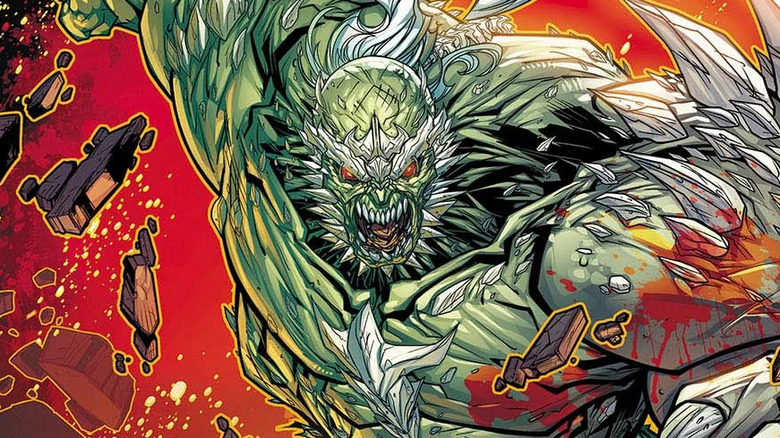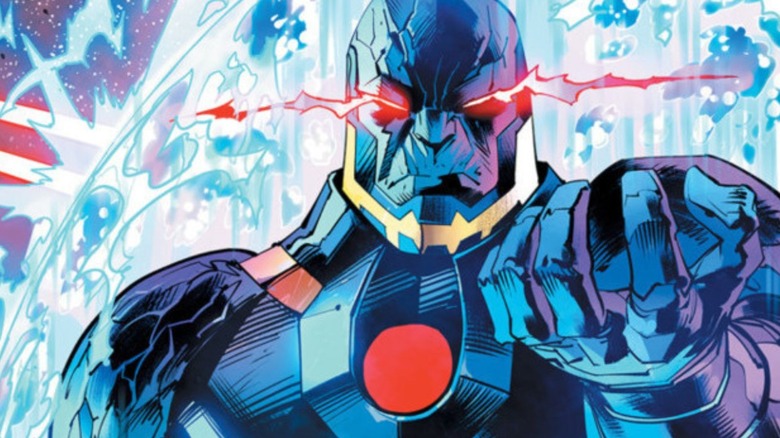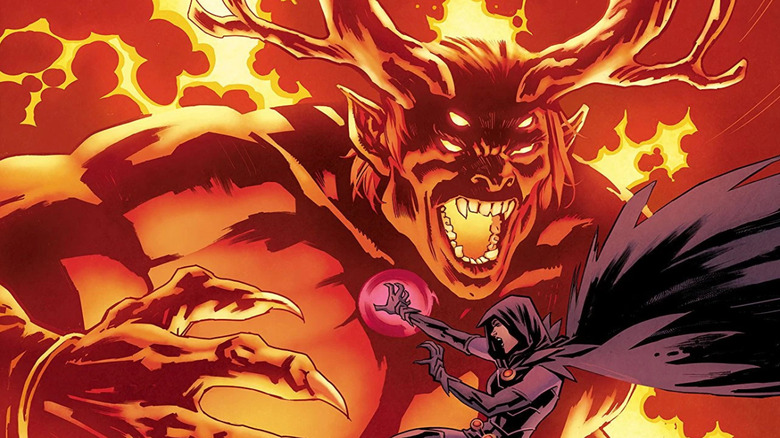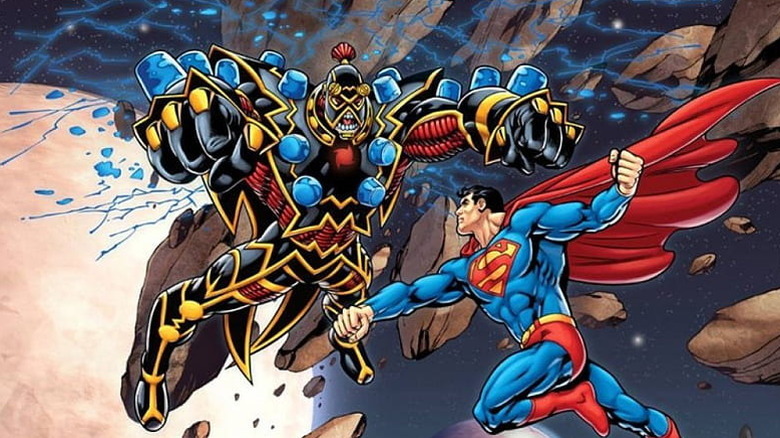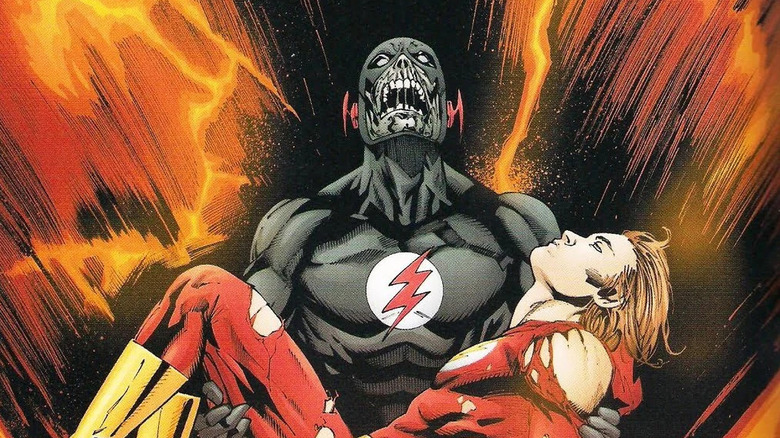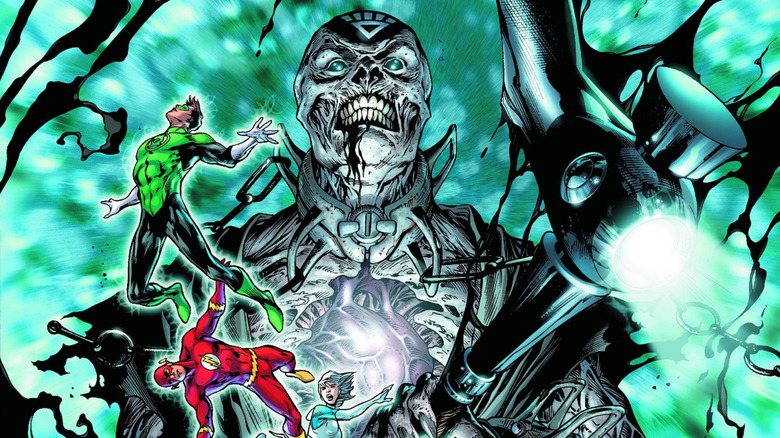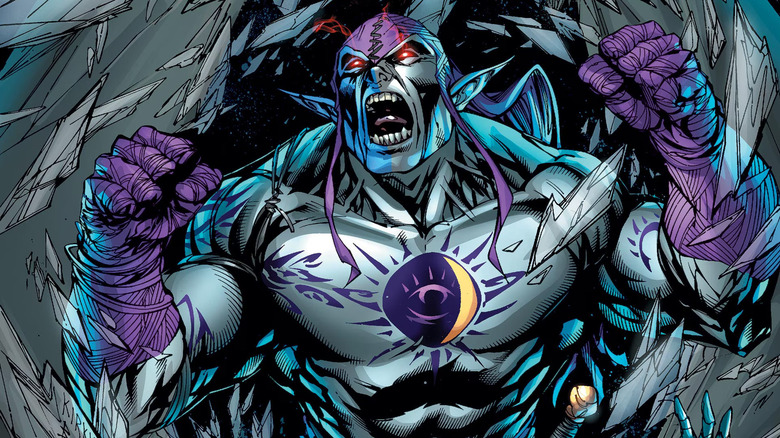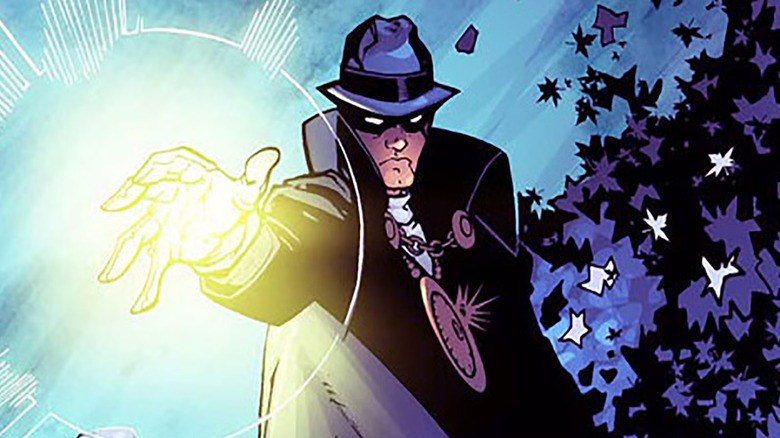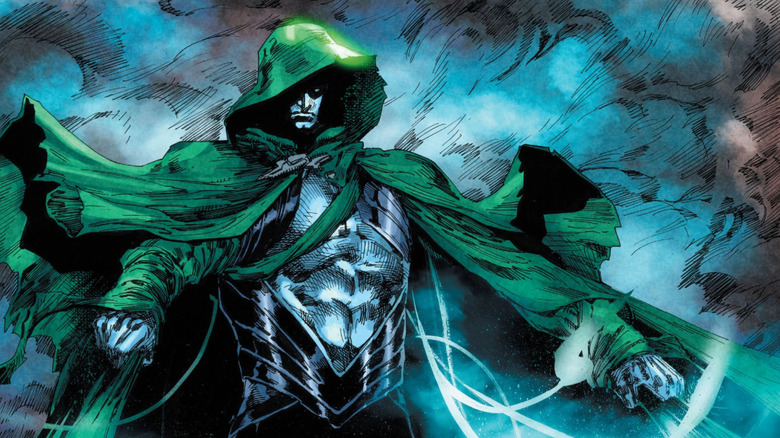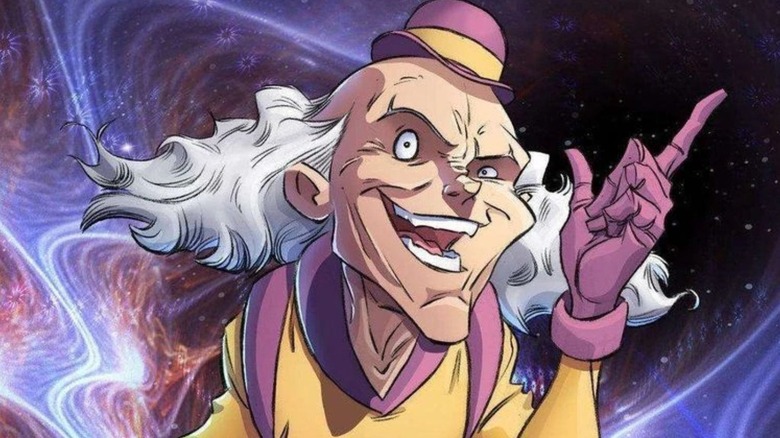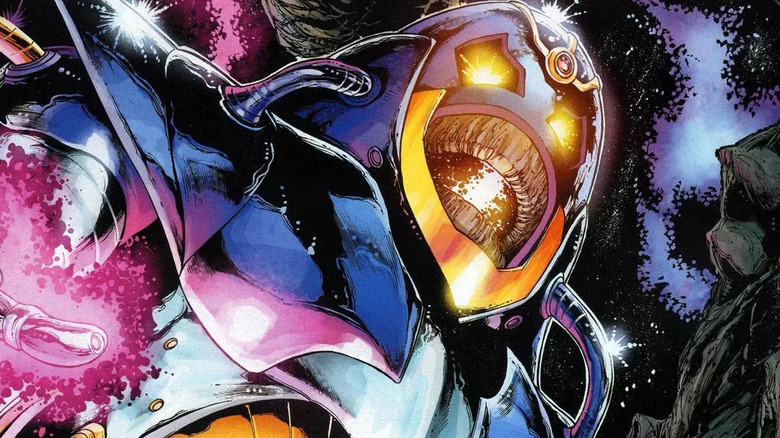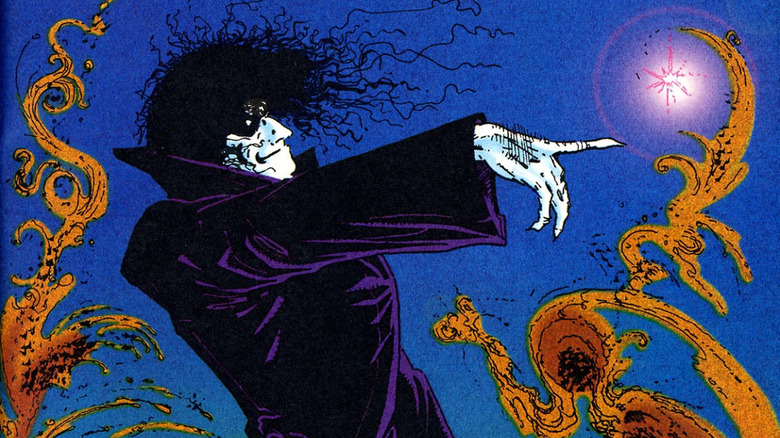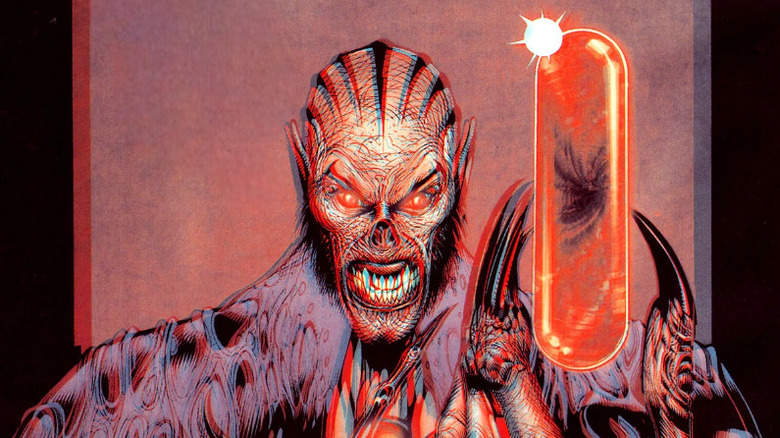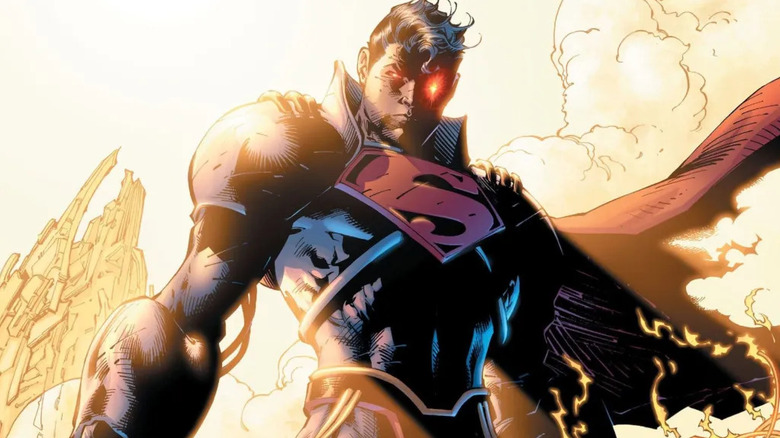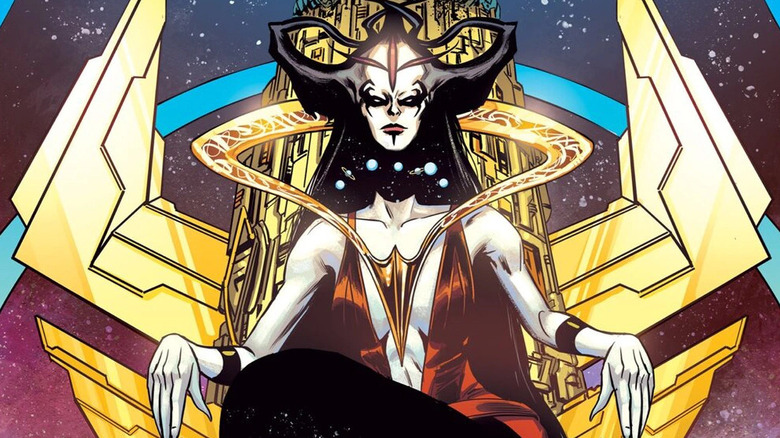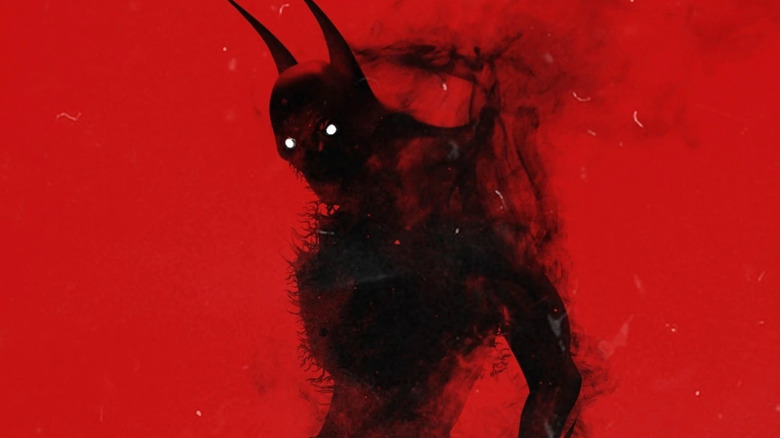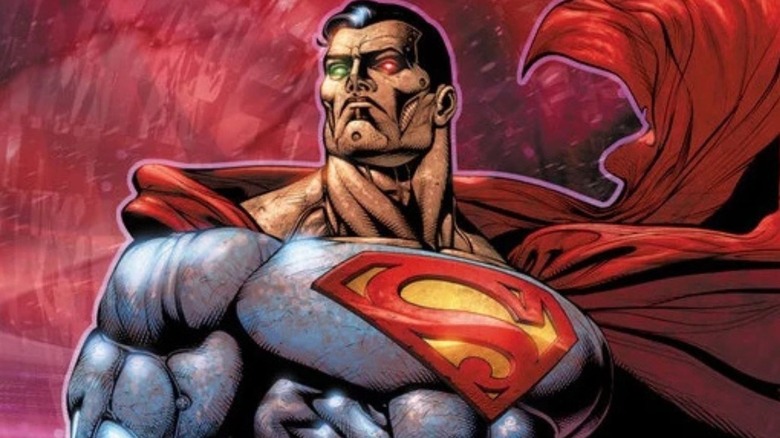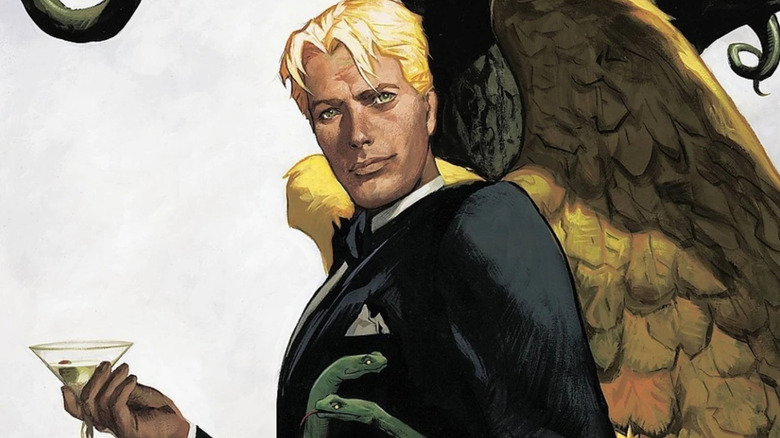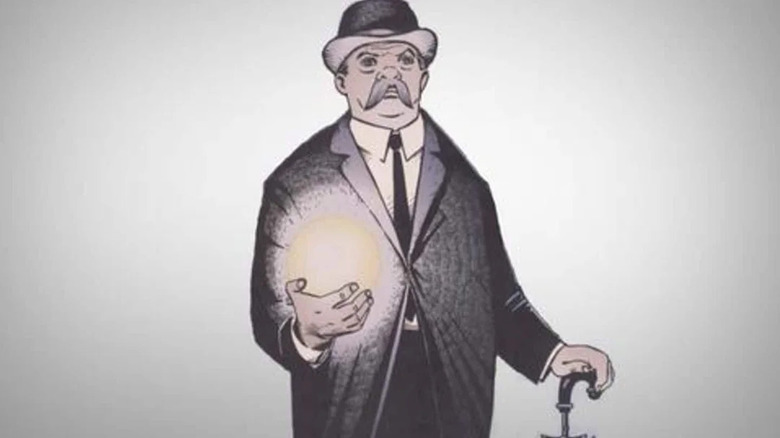20 Most Powerful DC Characters Ranked
Is it possible that the DC Multiverse contains the greatest sum-total of power in the superhero genre? While the characters of Japanese sci-fi/fanatsy manga and anime generally have superior might, other superhero universes don't usually get quite as ambitious with their heroes as the House That Batman Built.
DC Comics regularly throws the Justice League against inter-dimensional entities like demons that capable of swallowing the Earth whole, universe-conquering New Gods, multiversal mass murderers capable of catalyzing an "infinite" amount of crises, and even cosmic beings and spiritual deities who transcend the pages of the comics themselves. But who among them are the strongest?
We've gone through the tiers of power in the DC Multiverse to rank the 20 strongest heroes and villains residing therein, determining their placement based on how much of a threat they pose to each other in terms of raw strength, power, and destructive capability.
Here are the 20 most powerful characters in DC Comics!
20. Superman
It should be no surprise to any DC Comics fan that the Man of Steel himself would find his way on a list like this — but some may be surprised to see him at the lowest spot. Indeed, Superman is and always has been one of the strongest characters in the history of the comic book medium. The earliest versions of him were effectively written around the concept of a man being so powerful he could literally punch through universes and fly faster than time, and Zack Snyder's DC Extended Universe films chose to imagine his story as that of a god forced to live among and protect mortals (exhaustion from this trope is part of what made James Gunn's more mortal take on the character so refreshing).
But despite likely being the most powerful mainstream comic book character, the Last Son of Krypton is far from the top dog in the DC Universe. Certain varying-canonical versions of Superman might be able to creep a little bit higher, but this ranking feels appropriate for the common version.
19. Doomsday
Speaking of Zack Snyder's "Justice League" films, most casual DC fans were introduced to Doomsday through his 2016 feature "Batman v Superman: Dawn of Justice." Weird, Ninja Turtle-design aside, his portrayal was largely comic book accurate — if anything, Snyder might have nerfed him ever so slightly to make it a fair fight.
An ancient, artificially grown being of Kryptonian origin, Doomsday is most famous for being one of the few beings to "kill" Superman in the mainstream DC Universe. Much of his dominance comes from his unique ability to intuitively and automatically evolve his biology to survive any threat that might otherwise kill him. This makes Doomsday all but immortal, with the character being in his mid-to-late 200,000s by the time of the original "Death of Superman" comic.
His adaptive physiology doesn't just help him survive — it provides him with new, natural, and nigh-unlimited weapons to defeat his enemies. In the past, Doomsday has developed energy projection, used the Green Lantern's energy against them, and even gained the ability to breathe fire just to defeat the Martian Manhunter.
18. Darkseid
Depending on the precise version of the character we're talking about, Darkseid could arguably earn a significantly higher place on this list. The Dark Lord of Apokalips is a tricky entity to assess the power level of, as he is most commonly seen and engaged with in the comics through an avatar of some kind (in other words, the popular version of Darkseid the reader is thinking of is likely one of these lesser forms). As such, it's more useful for our purposes to rank the Darkseid that regularly has an impact on DC Comics storylines — even then, he's still one of the strongest villains in the canon.
His power level is comparable to that of Marvel's Thanos, with unmatched brute strength, durability, and surprising speed, as well as his inevitable omega beams that can pretty much one-shot most members of the Justice League. As for his "true" form, Darkseid is in actuality a high multiversal entity that exists as a concept almost outside human comprehension. In some ways, he is the ultimate evil of the DC Universe.
17. Trigon
Similarly, ranking the terrible demon Trigon requires a heavy asterisk, specifically due to his almost laughably inconsistent power scaling. DC writers at large can't seem to agree if he's an otherworldly demonic presence capable of destroying the world with hellish might or just a guy that can get routinely manhandled by his angsty teenage daughter and her weird friends. For our part, we'd put him on or slightly above the level of the worldly Darkseid in terms of raw power.
Both villains could be described as mid-to-high universal threats (villains with the capacity to conquer and/or eliminate a single DC reality), but Trigon's reality-warping capabilities and abstract power-set could elevate him to low-multiversal status depending on the imagination of the writer. He has even been ranked by other DC villains themselves as an existential, spiritual threat akin to a few nigh-omnipotent entries in our own top 10, though this has not been consistently backed up through actual feats and storylines.
16. Imperiex
The apex universal predator of the DC Universe is somewhat surprisingly a character many readers might not be keenly aware of. Created by Jeph Loeb and Ian Churchill during their 2000 run on "Action Comics," Imperiex is a relatively uninteresting villain that basically serves as an interchangeable planet-destroyer capable of posing a genuine physical threat to a character as powerful as Superman.
The Prime Imperiex is a quasi-nomadic force of cosmic power that has existed potentially since or even before the Big Bang, granting him a range of peak physical capabilities and an awareness of the universe that rivals those who exist outside of it. His goal is to literally destroy the known universe galaxy by galaxy so that he can rebuild it without a perceived flaw that drives his mad quest.
He proved to be so unstoppable that an inter-planetary alliance of heroes and villains was necessary to stop him (even Darkseid had to play a supporting role, unable to vanquish Imperiex on his own). In the process, Imperiex notably vaporized Doomsday with a single energy blast, one of the few instances in which the killing machine was decisively destroyed without immediate self-resurrection.
15. Black Flash
The DC speed force extended family are a lot more powerful than most casual comic book fans realize, and the most deadly among them by far is the Black Flash. He is effectively the grim reaper for any DC character with a connection to the speed force, an otherworldly entity and embodiment of death itself responsible for taking speedsters to their natural resting place. His most popular appearance was on the CW series "The Flash," in which he was created (or perhaps re-created) by Time Wraiths exacting their own divine justice against Teddy Sears' Professor Zoom / Hunter Zolomon.
The Black Flash is usually the fastest of the speedsters, though some writers have allowed a Flash or two to outrun him at great personal cost. He bears striking similarities to the Black Racer, the entity of death in the New Gods canon. This has caused some readers to speculate that the two are connected, if not one in the same. Regardless, he's a nigh-unstoppable, nigh-metaphysical adversary that can scarcely be avoided, much less defeated.
14. Nekron
While the Black Flash serves as the embodiment of death for speedsters, Nekron is the spirit that awaits those who serve the emotional spectrum during their lifetime. The two are likely close in terms of raw power level (a head-to-head battle would be thrillingly unpredictable, not to mention kind of poetic given the friendship shared by Barry Allen and Green Lantern Hal Jordan). The major reason for giving Nekron an edge in terms of our rankings is, of course, the "Blackest Night" event, which proved that Nekron has the ability to overwhelm the entire planet with his deathly power.
For those who have yet to read the 2009 Geoff Johns and Ivan Reis crossover series, it saw Nekron create a Black Lantern Corps by reviving the corpses of scores of dead DC heroes and villains, turning them into mindless, zombified superhumans further augmented by the Black Lantern rings forced upon them. He was even able to transform revived characters as well, and for a time, he held the entirety of Coast City under his power. Had Earth's remaining heroes and villains not united to stop him — aided greatly by the emergence of White Lantern energy — Nekron would've claimed the whole of the DC Universe for the undead.
13. Eclipso
An entity of death like Nekron represents a bridge of sorts between physical universal threats and certain quasi-metaphysical entities which draw their power more directly from the mysterious and divine forces which permeate the entire power structure of the DC Universe. There is no definitive theology or religion which dictates the bounds of this fictional reality — gods old and new, with origins spanning earthly continents and imaginary galaxies seem to rule alongside one another in strange harmony. But there is, indeed, a singular God of some kind that reigns above them all — and when his wrath is to be expressed, it is done so through a being like Eclipso.
Eclipso was the original Spirit of Vengeance in the DC continuity (and, from a certain point of view, in the comic book world at large, considering Marvel's Ghost Rider debuted in 1972 — nearly a full decade after Bob Haney and Lee Elias introduced their character in "House of Secrets"). Similar to Trigon, he's been used in the comics in a significantly de-powered capacity (a foe for one exceptionally strong hero or an entire team like the Justice League) or as an unusually overpowered nigh-omnipotent lower-case-g god. Taking that and his consistent power restrictions (because Eclipso went against God, his connection to divine power is relatively limited), we're placing him at the bottom of this informal divine-universal tier.
12. The Phantom Stranger
Right above Eclipso in terms of divine power and his connection to a metaphysical, all-powerful spiritual power source is the Phantom Stranger, a lesser-known DC Comics character probably best known to readers who caught his memorable feature on the "Batman: The Brave and the Bold" animated series. He is the most overtly Judeo-Christian-inspired mainstream (or perhaps mainstream-adjacent) character, with most of his origins having some kind of direct connection to the Old and/or New Testaments of the Bible. In the '80s, it was posited that he might be the punished spirit of an angel that had abstained from the original holy war between God and Lucifer, a sinner spared at Sodom and Gomorrah or some passerby who had taunted Jesus on the cross. In the New 52, he was none other than Judas Iscariot himself.
Whatever his origin may be, the Phantom Stranger is a holy transgressor who now walks the Earth, guiding heroes along the path of spiritual balance as penitence for his spiritual crimes. This comes with limitless power on-par with other avatars of the central DC Universe deity, and his connection to it is the purest of all. This means he is far less restricted than Eclipso but exercises near total restraint, especially compared to the next entry on our list.
11. The Spectre
In terms of raw spiritual power and the willingness and capability to wield it, there is no spiritual avatar equal to the Spectre. Now the true manifestation of God's wrath, he binds himself to mortal hosts through whom he uses his powers to bring violent justice to vilest beings in creation. His most common host is police detective Jim Corrigan, a morally righteous crimefighter killed in action, then revived by the Spectre to avenge his own death. (We've been arguing for a while now that he's the next DC superhero who deserves their own movie.)
While the Phantom Stranger uses a similar powerset to act as a spiritual guide, the Spectre engages in direct combat against supervillains on a regular basis. He notably appeared before the disgusting Doctor Light during "Final Crisis" to deliver one of the most brutal executions in DC Comics history.
10. Mr. Mxyzptlk
Moving away from universal and lesser spiritual threats, we break into the world of multiversal threats — those beings so powerful that they pose a threat not only to their home reality, but the very system of realities which make up the wider DC web of continuities. Mr. Mxyzptlk is either a low or mid-multiverse level threat, depending on what reader you ask, though we'd personally argue his less than malevolent intentions shift him toward the lower end of this scale.
Mr. Mxyzptlk (or Mxy, pronounced "Mixy," as he is sometimes known) is an imp from the Fifth Dimension, an alternate reality that exists within the mainstream DC Universe (as opposed to an alternate earth like Earth-2). Because of his connection to this inter-dimensional world, Mxy is effectively omnipotent, often operating with what comic book readers might call "Looney Tunes" logic/physics. He's a largely comedic but nonetheless unimaginably powerful adversary who poses a significant nuisance to Superman on the regular (and if that "Peacemaker" season 2 easter egg means what we think it means, David Corenswet's Clark Kent is in for a rude awakening in the near future).
9. Anti-Monitor
Key to Nekron's capability to generate a Black Lantern Corps was his capture of the Anti-Monitor. He was notably only able to do so because another character on this list (who made it a bit higher than either Nekron or the Anti-Monitor) had weakened this cosmic mass murderer in a vengeful rage during the Sinestro Corps War — once the Anti-Monitor was returned to full strength, he overpowered Nekron fairly easily, decisively earning a spot essentially above death itself.
It's fitting, as the Anti-Monitor is arguably the most iconic multiversal threat in the DC Universe, as well as one of, if not the most deadly characters in comic book history. In "Crisis on Infinite Earths" (the 1985 storyline from Marv Wolfman and George Perez that made him famous), he's said to have destroyed countless universes, meaning his body count is truly and literally incalculable. Thanos barely touched his own multiverse, by comparison.
It's possible that the Anti-Monitor has the highest confirmed kill count in all of DC Comics. Divine threats like Eclipso, the Spectre, or even the Phantom Stranger could pose a threat to him (depending on how badly the writer responsible wants them to do so), but given that the Anti-Monitor answers to no one and is restricted by almost nothing, we'd argue he's earned his place in the top 10.
8. Dream
The nature of primordial power in the DC Universe is intentionally vague and up for debate. It can be difficult to determine for certain which kind of omnipotent beings reign as the supreme force — the omniversal threats, who understand themselves as and/or are capable of transcending their literal nature as fictional characters, or the high spiritual beings, who create and control the foundational elements of the known multiverse.
DC has yet to explain how these ideas can co-exist but, at least in terms of raw power alone, they seem to do so on a relatively level playing field. Dream (also known as Morpheus, the central character of Netflix's beloved series "The Sandman"), with his immortality and untold spiritual power, would have little to worry about when it comes to a being like the Anti-Monitor. On the other hand, many omniversal threats could edge slightly above his power level (especially taking into account the fate of Dream in the original comic book series).
7. Mandrakk, the Dark Monitor
While the Anti-Monitor is the most dangerous multiversal threat in the DC Universe, characters like Mandrakk, The Dark Monitor are so powerful that their impact extends into the omniverse. Put simply, the system of every universe and multiverse that has ever existed, including the real world where you're currently reading SlashFilm (and, also, canonically speaking, an alternate universe where you're currently reading SplashFilm, and this list is a definitive ranking of the strongest whales in the multibillion-dollar "Free Willie" Cinematic Universe, but we digress).
As convoluted (and awesome) as that "fake" universe sounds, we'd have an easier time explaining that than 90% of the characters created by Grant Morrison. Mandrakk is basically a vampiric, corrupted monitor that feeds off of an energy that exists in the nooks and crannies of stories called "The Bleed." For our purposes, it matters most that he can erase multiverses from existence without much effort, making him like the Anti-Monitor Squared.
6. Superboy-Prime
Here's where things start to get a little weird — and by weird, we mean meta. The following characters could be shifted around in near infinite ranking orders depending on which power systems a particular DC fan considers superior to another. We thought carefully about the thru-line of shaky power-scaling that guides the remainder of this list, which begins with the meta-multiversal or nigh-omniversial threat Superboy-Prime.
The strongest Kryptonian in the DC Comics canon, the Kal-El of Earth-Prime (a reality eradicated by the Anti-Monitor during "Crisis on Infinite Earths") is one of a very few characters who can see the very bounds of the reality he lives within — to the extent that he knows he exists as a comic book character. He isn't just a Deadpool-style fourth-wall-breaker but a consistently reality-shattering event-level villain (and, more recently, antihero) who demands the full attention of the DC Comics multiverse when he's on a rampage. It's also worth mentioning that Superboy-Prime is the reason the Anti-Monitor was so badly injured during the Sinestro Corps War.
5. Perpetua
Introduced in one of the best (and most recent) runs on "Justice League," Perpetua is the most powerful primordial cosmic being in the DC Multiverse, hands down. The pun here is slightly intended, of course, as she was but one of (five or more) "Super Celestial" beings known as the Hands. They were created by an even higher, more ambiguous and seemingly un-personified (though we'll speculate on that further down) entity of absolute creative dominion called "The Source."
As a Hand of the Source, she is responsible for creating the entire DC Multiverse as we know it. She rebelled against her creators, however, and was a dangerous, malevolent Sixth Dimensional threat who abused her power to create and destroy realities at will. She was eventually killed by the Batman Who Laughs, a former ally who sought her power for himself.
4. The Darkest Knight
We're sure all DC fans were absolutely chill when the most powerful version of Superman was seemingly defeated by the most powerful version of Batman in "Dark Knights: Death Metal." In fairness, it's hard to argue this as a definitive answer to perhaps the most exhausted "Who would win?" debate in comics, as the Darkest Knight is a combination of several powerful DC Comics characters.
In addition to possessing the intellect and the base physical states of Bruce Wayne, the Darkest Knight (formerly the Batman Who Laughs) has the personality and criminal brilliance of the Joker, the omniversal awareness of Perpetua, and the reality-shaping powers of Doctor Manhattan (who we've elected to omit from this list, given that he's traditionally a "Watchmen"-specific character). He is the most dangerous omniversal threat known to the DC Universe, having personally sealed Perpetua within the Source Wall by bending it to his will.
3. Thought Robot
Some might accuse early "Superman" writers of giving the character a ridiculous amount of plot armor — but none nearly as much as Grant Morrison, who essentially personified the concept of plot armor through the Man of Steel during the "Final Crisis" event. With Mandrakk, the Dark Monitor threatening all of existence, the Monitors enlisted the help of the main universe Superman to defeat him.
He wouldn't have survived in his natural state, however. To compete with an omniversal threat like Mandrakk, Superman would need to become one himself in the form of the Thought Robot, a cosmic entity with the consciousness of Superman that can literally and explicitly do anything the writer needs him to do to bring balance to the DC Multiverse. He is a means through which a comic book writer like Morrison can directly influence the story, which could be considered the ultimate power in the DC Multiverse, if Thought Robot weren't ultimately destroyed in his first and only battle.
2. Lucifer Morningstar
Back to the high-spiritual side of things, Lucifer Morningstar is, indeed, meant to be something close to the Abrahamic interpretation of Satan or the Devil himself in terms of origin. He was once the most trusted and powerful angel in Heaven, but he was cast out by God after instigating a rebellious holy civil war against his creator. He lives both in Hell and on Earth, where he walks among humans with near limitless power — though he almost never uses it on a grand, cosmic scale comparable to the actions of The Darkest Knight or the Thought Robot.
Nonetheless, Lucifer's power is indisputable, especially when connected to the Dunamis Demiurgos, a force of pure and unbridled spiritual creative power that is protected by his brother Michael. Without it, he's still effectively untouchable, save by the one who created him.
1. The Presence
Simply put, the Presence is explicitly implied to be the capital-G God of not only the DC Multiverse, but... well, everything, including even our world (though that's a significantly less-common angle now, and obviously depended on the religious leanings of the writer using him). The Presence has been seen as a direct adaptation of a mainstream religious God, but it's also up to interpretation if he — as the supreme force of power and creation in the omniverse — has merely been understood as such by humans throughout time.
For instance, while the Presence has been written as the Abrahamic God, he's also become synonymous with the cosmic entity the Source. One could also argue that he is a manifestation of the writers themselves — who ultimately are most powerful canonical beings, capable of completely ruining this list with a single story arc.
